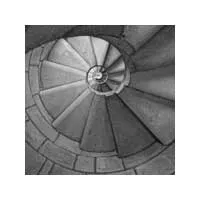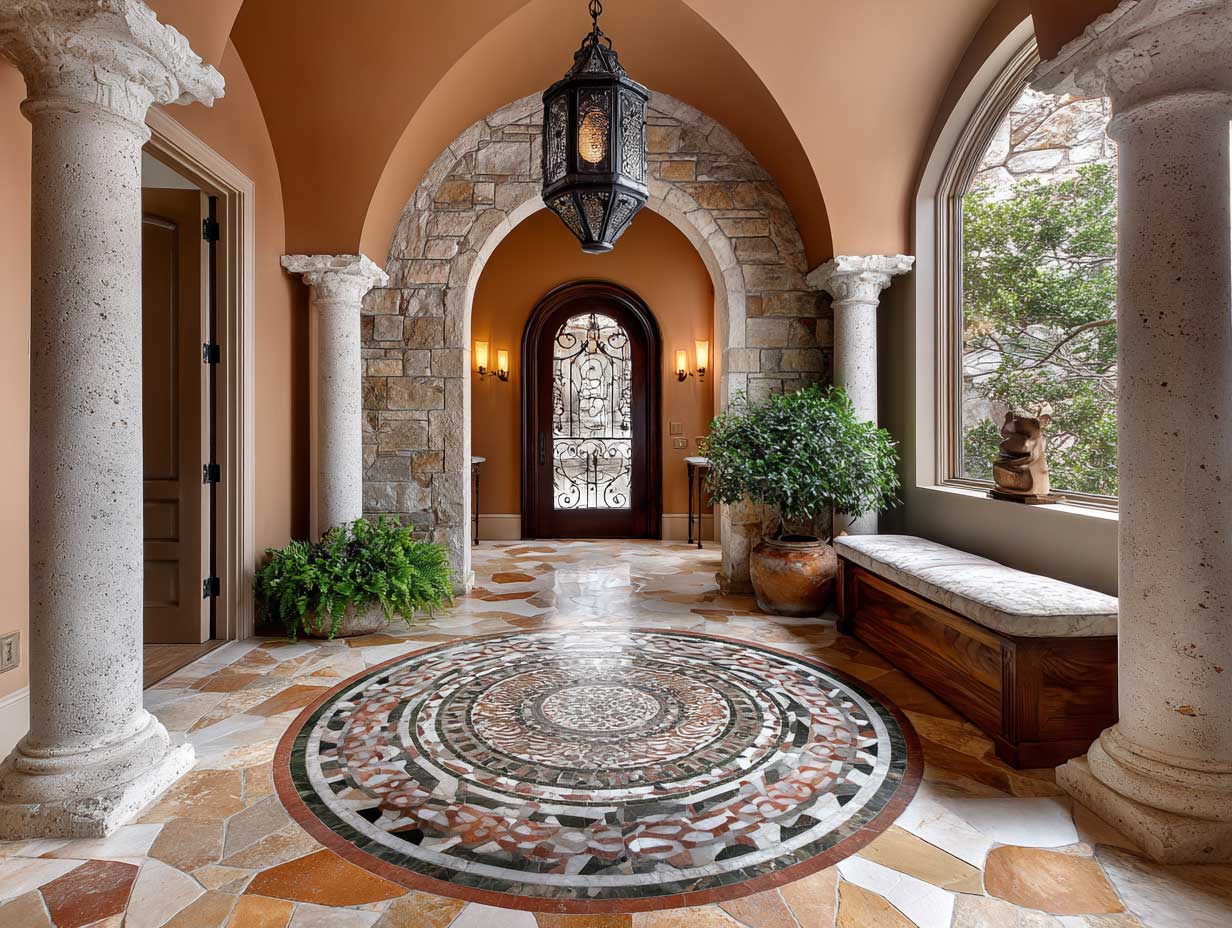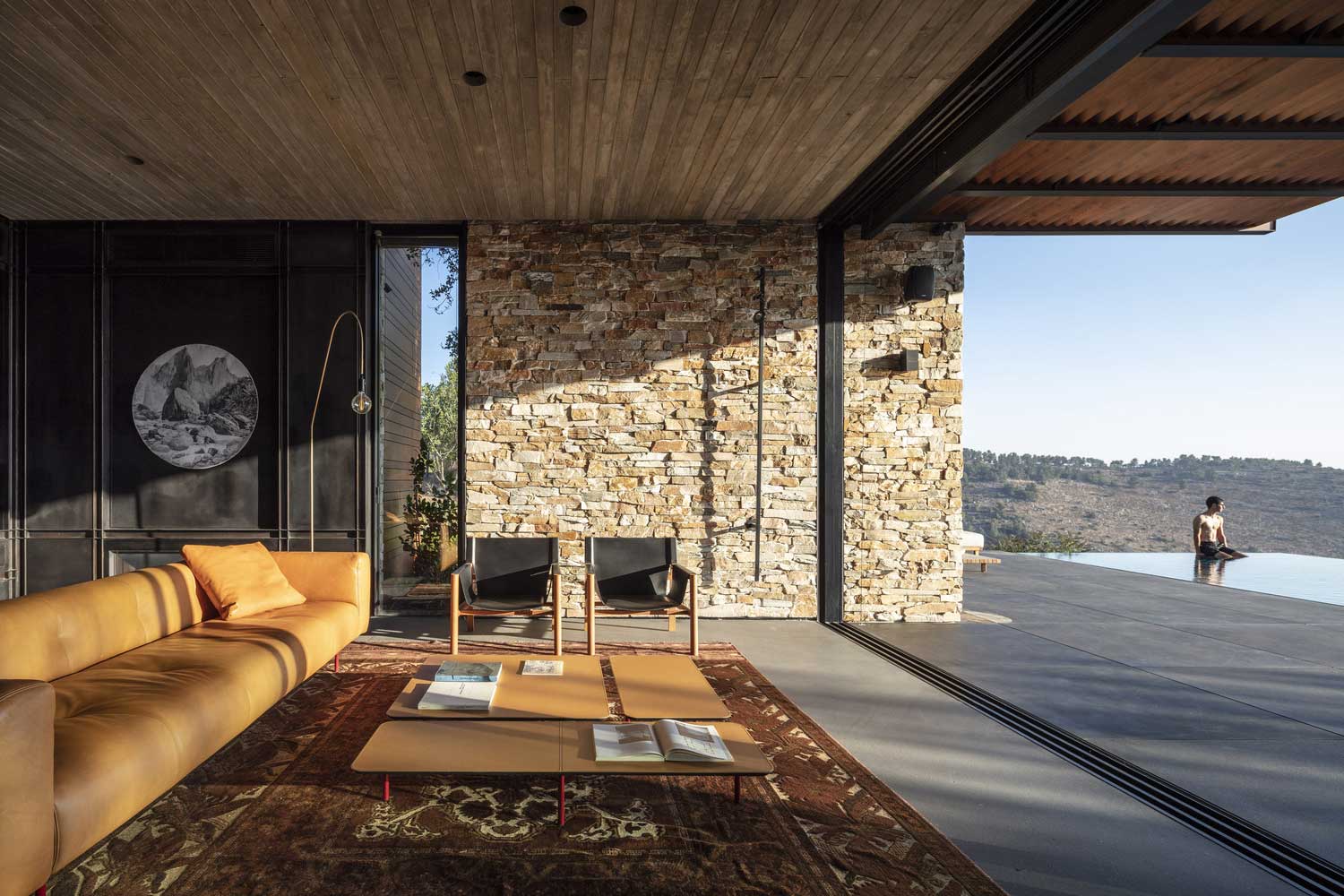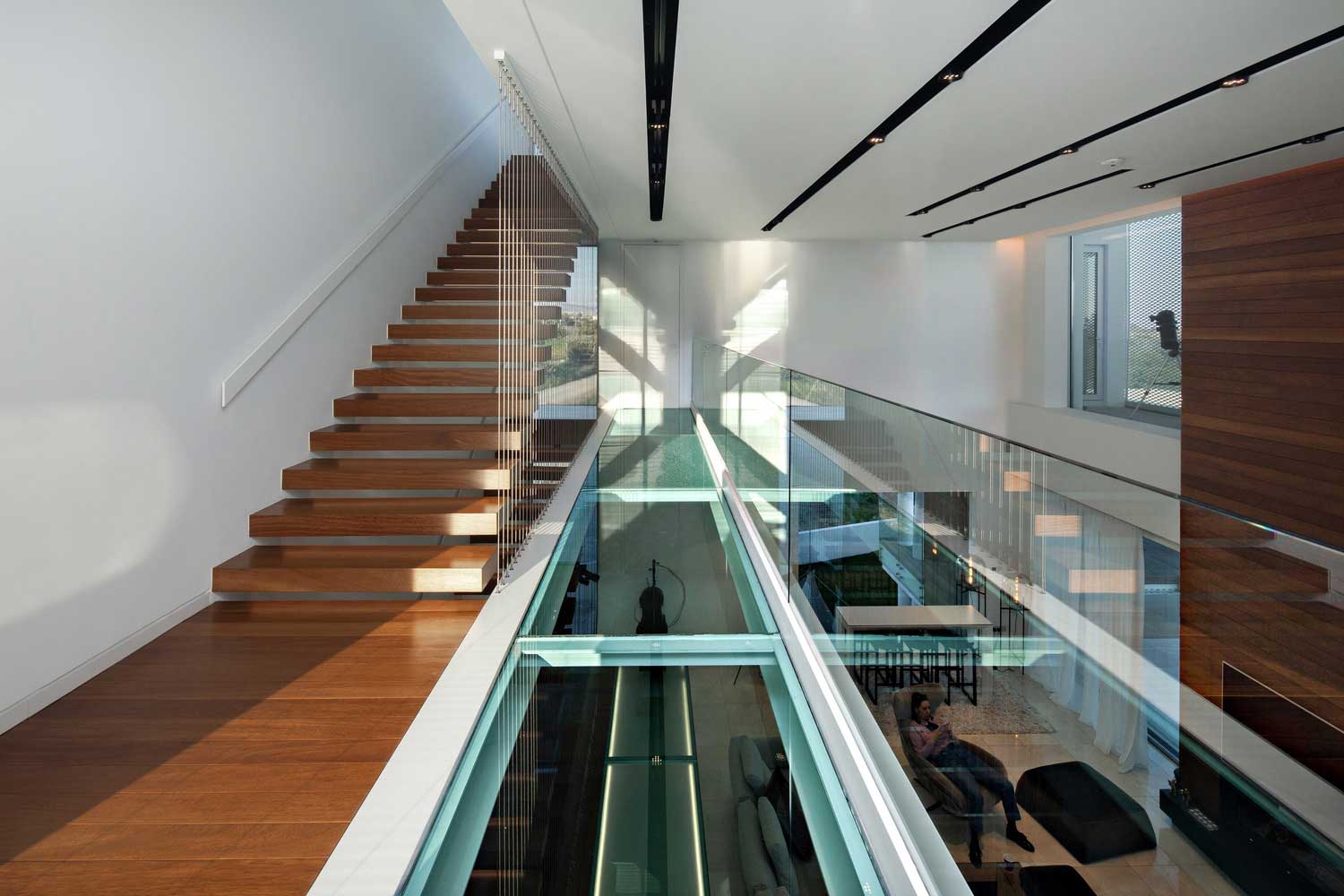The Mediterranean style is inspired by the coastal regions of Spain, Italy, and Greece. It brings together the warmth of earthy tones, the brightness of the sun, and the freshness of the sea to create a relaxed and inviting atmosphere in your home. The Mediterranean style house interior is characterized by its use of natural materials, textured walls, and a color palette inspired by the sea and nature. In this article, we will unlock the secrets of the Mediterranean style house interior and show you how to incorporate this timeless and beautiful style into your home.
Mediterranean Style Living Room
The living room is often considered the heart of the home, a space where we gather with family and friends, share conversations, and create lasting memories. Therefore, it is essential to create a living room that is not only functional but also aesthetically pleasing and inviting. One way to achieve this is by incorporating the Mediterranean style into your living room decor. The Mediterranean style house interior is characterized by its use of natural materials, textured walls, and a color palette inspired by the sea and nature.
In a Mediterranean style living room, the walls are often textured with stucco or plaster to create a rustic and aged appearance. The color palette is warm and earthy, with shades of terracotta, olive green, and beige. Natural materials such as wood, stone, and wrought iron are commonly used in furniture and decor. Additionally, decorative elements such as mosaic tiles, pottery, and tapestries add visual interest and a touch of Mediterranean charm.





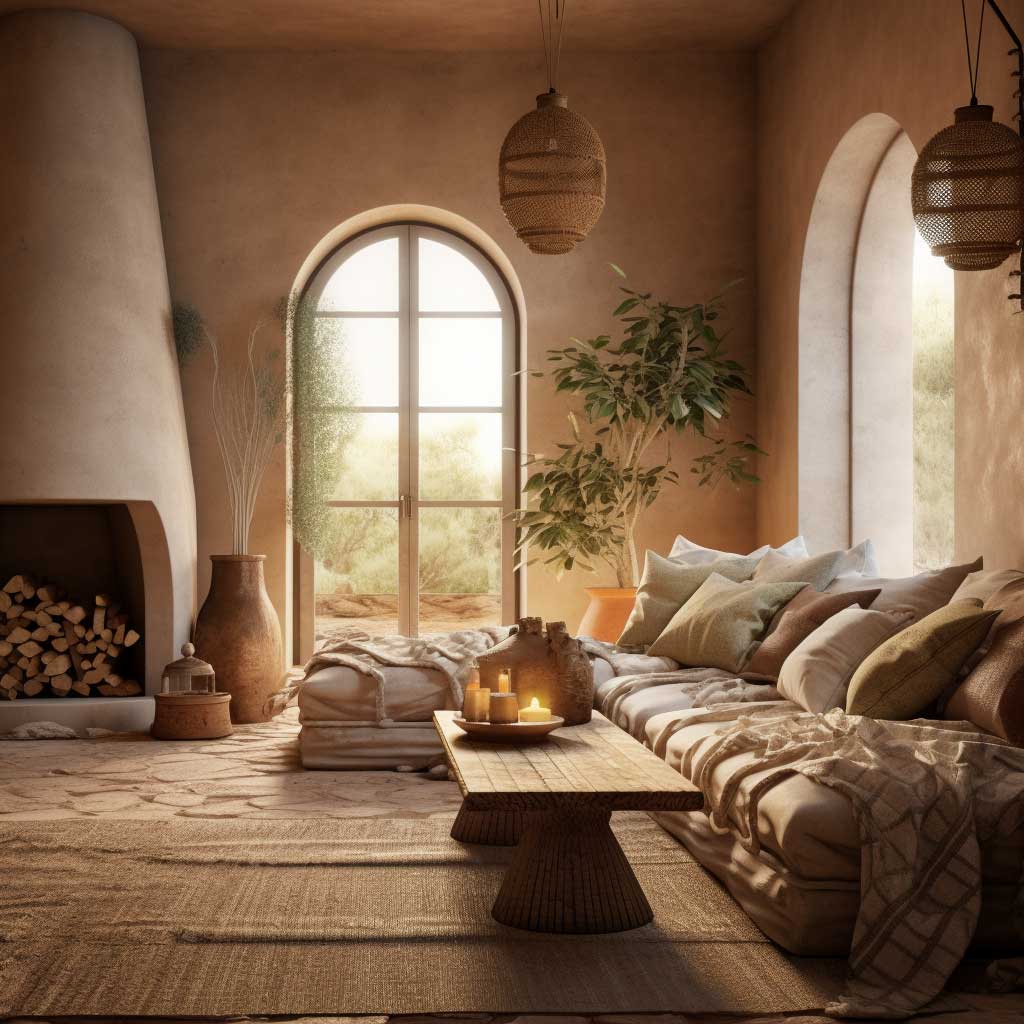
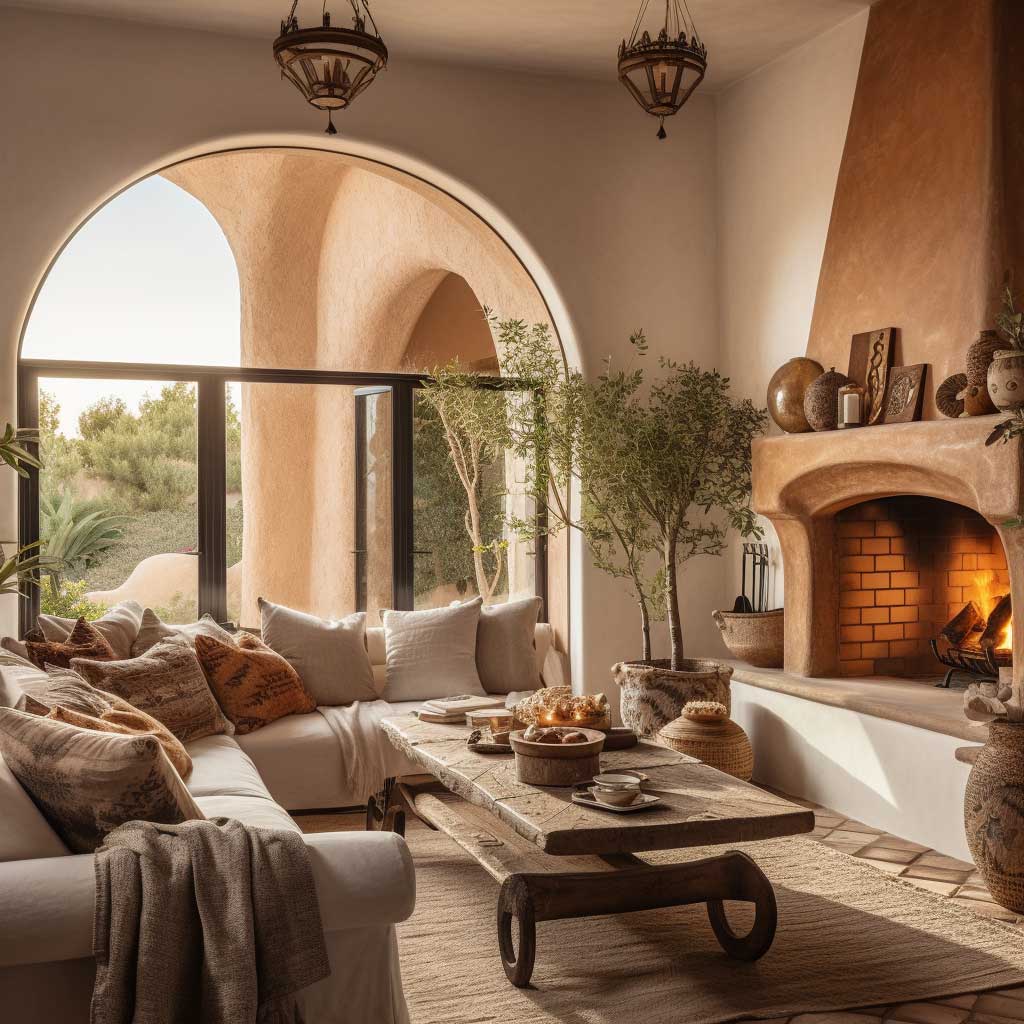

The furniture in a Mediterranean style living room is often made of wood with a rustic or distressed finish. Upholstery is typically in neutral colors or earth tones, with accents of blue, green, or yellow. Decorative pillows and throws with patterns inspired by nature or Mediterranean motifs add texture and color to the space. Additionally, a large area rug with a geometric or floral pattern can anchor the seating area and add warmth to the room.
Lighting is an essential element in a Mediterranean style living room. Natural light is maximized through large windows or French doors, often dressed with sheer curtains or wooden shutters. Additionally, wrought iron chandeliers, lanterns, or sconces with warm white bulbs create a cozy and inviting atmosphere in the evening.
In conclusion, a Mediterranean style living room is characterized by its use of natural materials, textured walls, and a warm and earthy color palette. Decorative elements such as mosaic tiles, pottery, and tapestries add visual interest and a touch of Mediterranean charm. With its cozy and inviting atmosphere, a Mediterranean style living room is the perfect space to gather with family and friends and create lasting memories.
Mediterranean Style Kitchen
The kitchen is often considered the heart of the home, a space where we prepare meals, share conversations, and spend quality time with loved ones. Therefore, it is essential to create a kitchen that is not only functional but also aesthetically pleasing and inviting. One way to achieve this is by incorporating the Mediterranean style into your kitchen decor. The Mediterranean style house interior is characterized by its use of natural materials, textured walls, and a color palette inspired by the sea and nature.
In a Mediterranean style kitchen, the cabinets are often made of wood with a rustic or distressed finish. The countertops are typically made of natural stone, such as granite or marble, or terracotta tiles. The backsplash may feature mosaic tiles with geometric or floral patterns. Additionally, wrought iron details, such as cabinet pulls, pot racks, or light fixtures, add a touch of Mediterranean charm.




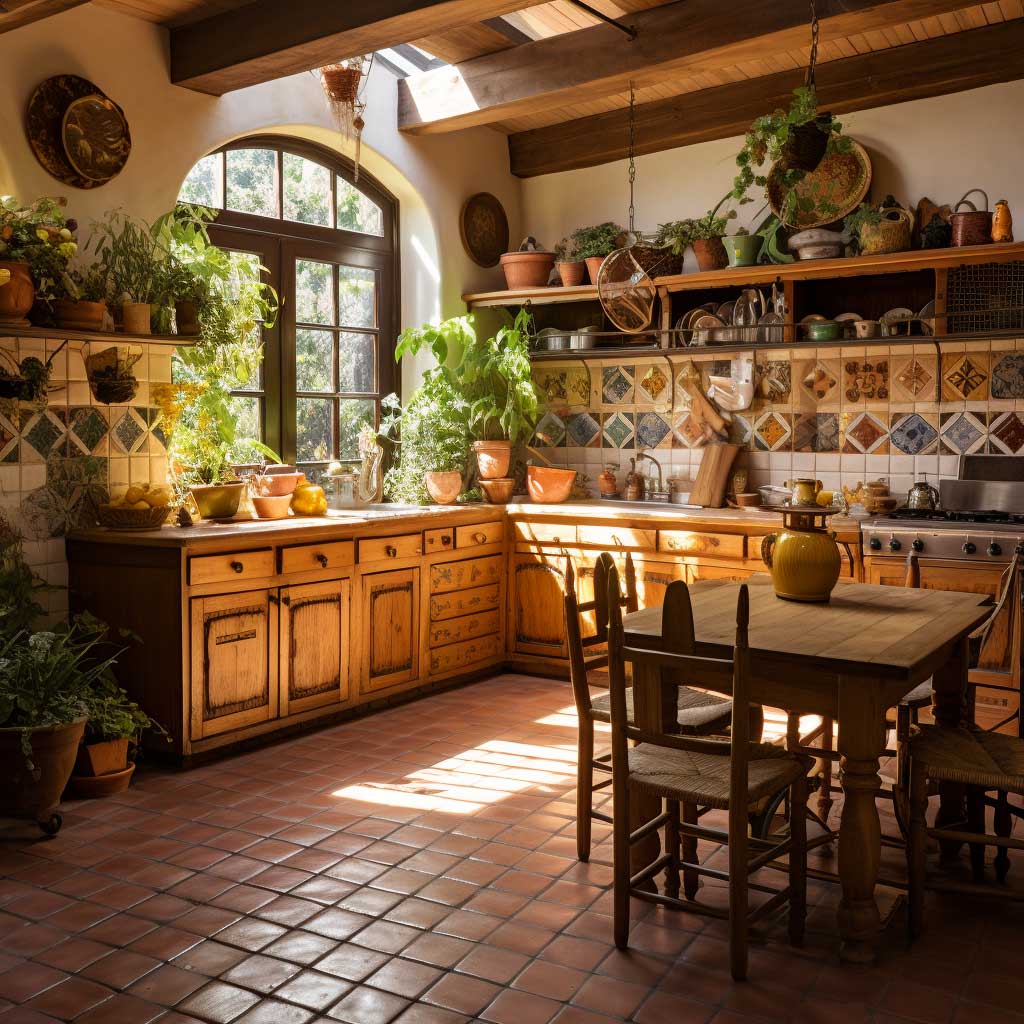
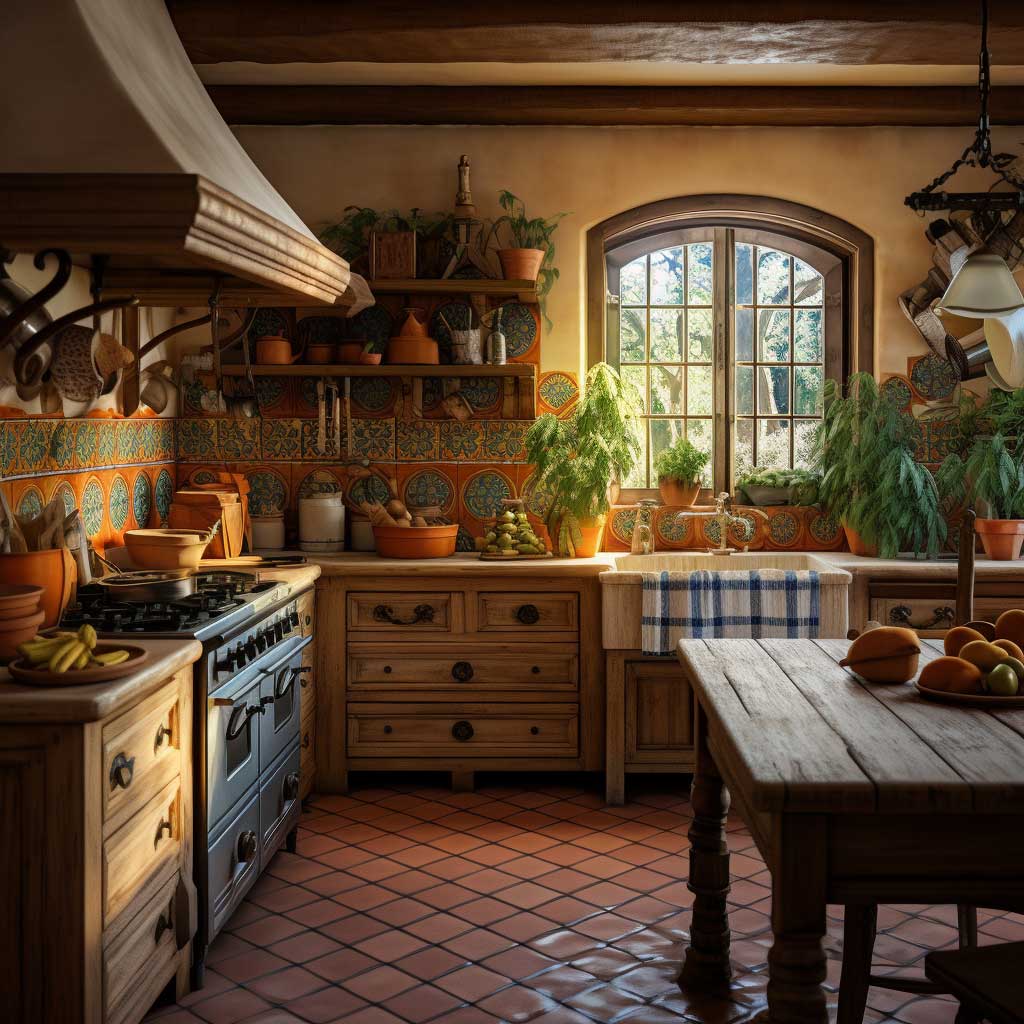

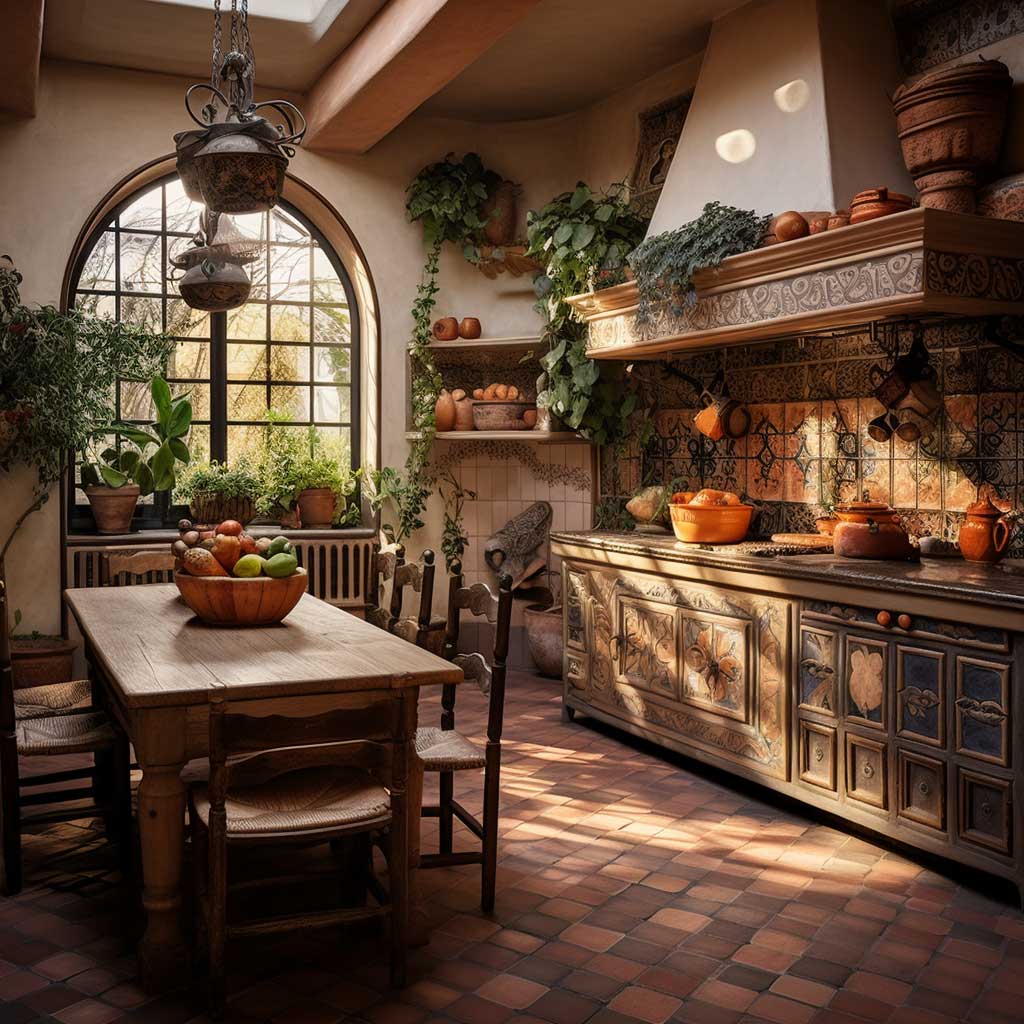
The color palette in a Mediterranean style kitchen is warm and earthy, with shades of terracotta, olive green, and beige. Accents of blue, green, or yellow add a pop of color and create a fresh and vibrant atmosphere. Additionally, decorative elements such as pottery, ceramics, and tapestries add visual interest and a touch of Mediterranean charm.
The flooring in a Mediterranean style kitchen is often made of terracotta tiles, natural stone, or hardwood. An area rug with a geometric or floral pattern can add warmth and texture to the space. Additionally, wooden beams on the ceiling add architectural interest and a rustic touch.
Lighting is an essential element in a Mediterranean style kitchen. Natural light is maximized through large windows or French doors, often dressed with sheer curtains or wooden shutters. Additionally, wrought iron chandeliers, lanterns, or sconces with warm white bulbs create a cozy and inviting atmosphere in the evening.
In conclusion, a Mediterranean style kitchen is characterized by its use of natural materials, textured walls, and a warm and earthy color palette. Decorative elements such as mosaic tiles, pottery, and ceramics add visual interest and a touch of Mediterranean charm. With its cozy and inviting atmosphere, a Mediterranean style kitchen is the perfect space to prepare meals and spend quality time with loved ones.
Mediterranean Style Bedroom
The bedroom is a personal sanctuary, a space where we relax, unwind, and recharge after a long day. Therefore, it is essential to create a bedroom that is not only comfortable but also aesthetically pleasing and inviting. One way to achieve this is by incorporating the Mediterranean style into your bedroom decor. The Mediterranean style house interior is characterized by its use of natural materials, textured walls, and a color palette inspired by the sea and nature.
In a Mediterranean style bedroom, the walls are often textured with stucco or plaster to create a rustic and aged appearance. The color palette is neutral and earthy, with shades of beige, cream, and brown. Natural materials such as wood, stone, and wrought iron are commonly used in furniture and decor. Additionally, decorative elements such as mosaic tiles, pottery, and tapestries add visual interest and a touch of Mediterranean charm.





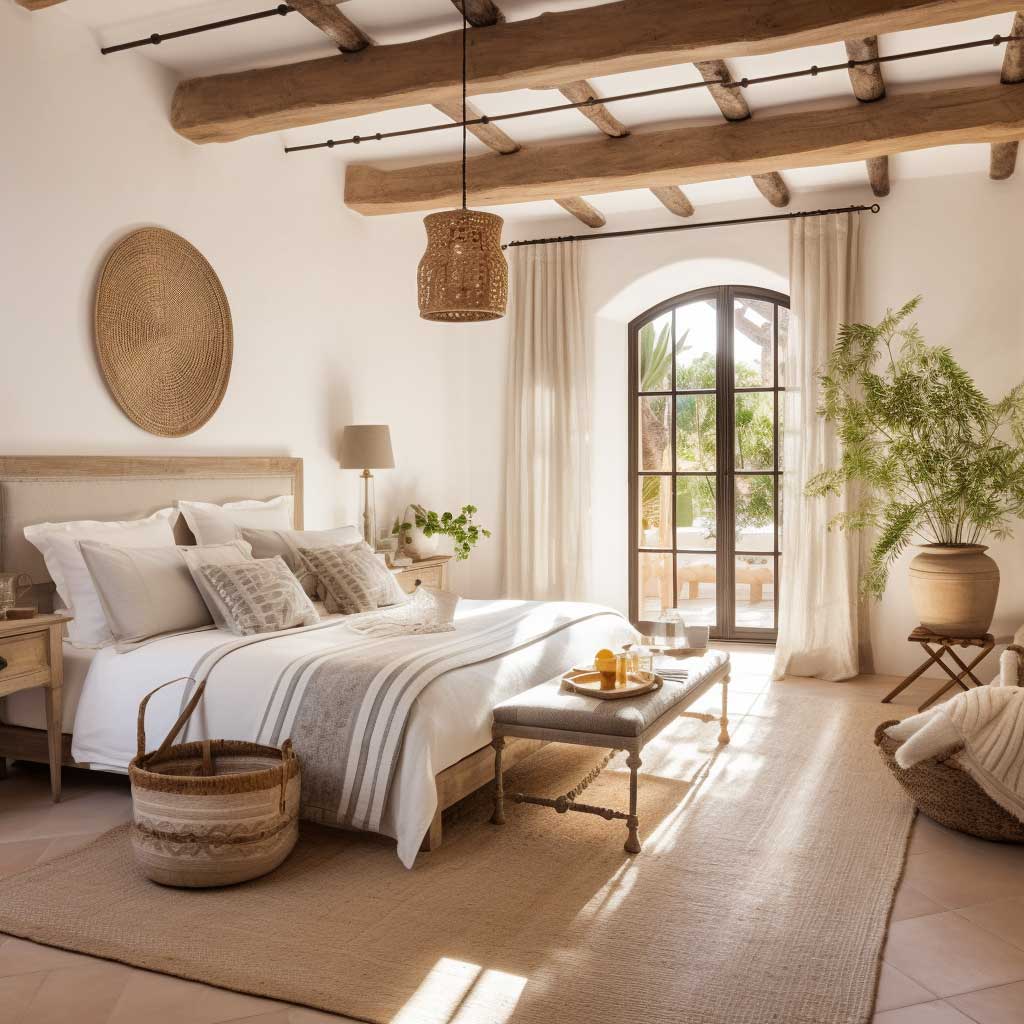


The furniture in a Mediterranean style bedroom is often made of wood with a rustic or distressed finish. The bed may feature a wrought iron or wooden headboard with intricate carvings or details. Bedding is typically in neutral colors or earth tones, with accents of blue, green, or yellow. Decorative pillows and throws with patterns inspired by nature or Mediterranean motifs add texture and color to the space. Additionally, a large area rug with a geometric or floral pattern can anchor the bed and add warmth to the room.
Lighting is an essential element in a Mediterranean style bedroom. Natural light is maximized through large windows or French doors, often dressed with sheer curtains or wooden shutters. Additionally, wrought iron chandeliers, lanterns, or sconces with warm white bulbs create a cozy and inviting atmosphere in the evening.
In conclusion, a Mediterranean style bedroom is characterized by its use of natural materials, textured walls, and a neutral and earthy color palette. Decorative elements such as mosaic tiles, pottery, and tapestries add visual interest and a touch of Mediterranean charm. With its cozy and inviting atmosphere, a Mediterranean style bedroom is the perfect space to relax, unwind, and recharge after a long day.
Mediterranean Style Bathroom
The bathroom is often considered a personal sanctuary, a space where we start and end our day. Therefore, it is essential to create a bathroom that is not only functional but also aesthetically pleasing and inviting. One way to achieve this is by incorporating the Mediterranean style into your bathroom decor. The Mediterranean style house interior is characterized by its use of natural materials, textured walls, and a color palette inspired by the sea and nature.
In a Mediterranean style bathroom, the walls are often textured with stucco or plaster to create a rustic and aged appearance. The color palette is neutral and earthy, with shades of beige, cream, and brown. Natural materials such as wood, stone, and wrought iron are commonly used in furniture and decor. Additionally, decorative elements such as mosaic tiles, pottery, and tapestries add visual interest and a touch of Mediterranean charm.








The vanity in a Mediterranean style bathroom is often made of wood with a rustic or distressed finish. The countertop is typically made of natural stone, such as granite or marble, or terracotta tiles. The sink may be a vessel sink made of ceramic or stone. Additionally, wrought iron details, such as cabinet pulls, towel racks, or light fixtures, add a touch of Mediterranean charm.
The shower or bathtub in a Mediterranean style bathroom is often surrounded by natural stone or terracotta tiles. The tiles may feature geometric or floral patterns. Additionally, a wrought iron or wooden screen can add privacy and architectural interest to the space.
The flooring in a Mediterranean style bathroom is often made of terracotta tiles, natural stone, or hardwood. An area rug with a geometric or floral pattern can add warmth and texture to the space.
Lighting is an essential element in a Mediterranean style bathroom. Natural light is maximized through large windows or French doors, often dressed with sheer curtains or wooden shutters. Additionally, wrought iron chandeliers, lanterns, or sconces with warm white bulbs create a cozy and inviting atmosphere in the evening.
In conclusion, a Mediterranean style bathroom is characterized by its use of natural materials, textured walls, and a neutral and earthy color palette. Decorative elements such as mosaic tiles, pottery, and tapestries add visual interest and a touch of Mediterranean charm. With its cozy and inviting atmosphere, a Mediterranean style bathroom is the perfect space to start and end your day.
Mediterranean Style Dining Room
The dining room is often considered the heart of the home, a space where we gather with family and friends, share meals, and create lasting memories. Therefore, it is essential to create a dining room that is not only functional but also aesthetically pleasing and inviting. One way to achieve this is by incorporating the Mediterranean style into your dining room decor. The Mediterranean style house interior is characterized by its use of natural materials, textured walls, and a color palette inspired by the sea and nature.
In a Mediterranean style dining room, the walls are often textured with stucco or plaster to create a rustic and aged appearance. The color palette is warm and earthy, with shades of terracotta, olive green, and beige. Natural materials such as wood, stone, and wrought iron are commonly used in furniture and decor. Additionally, decorative elements such as mosaic tiles, pottery, and tapestries add visual interest and a touch of Mediterranean charm.





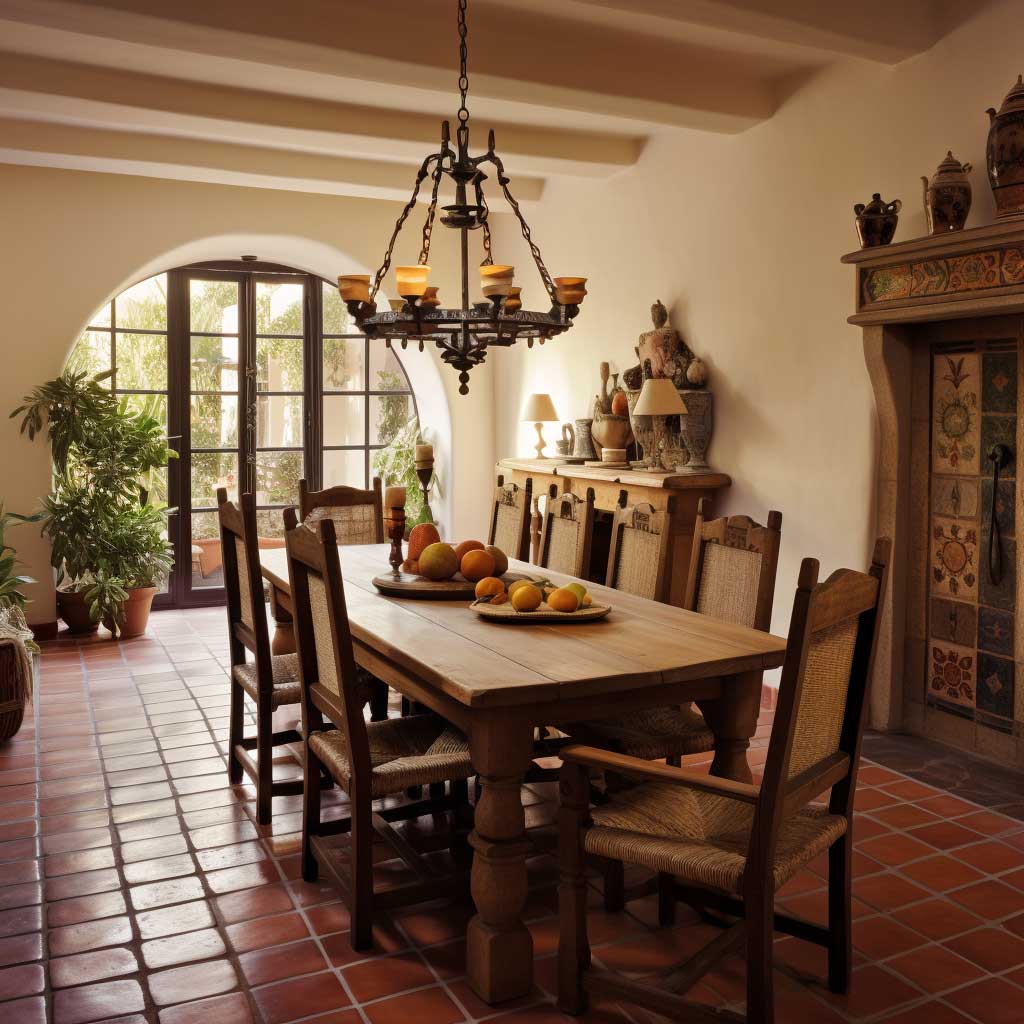

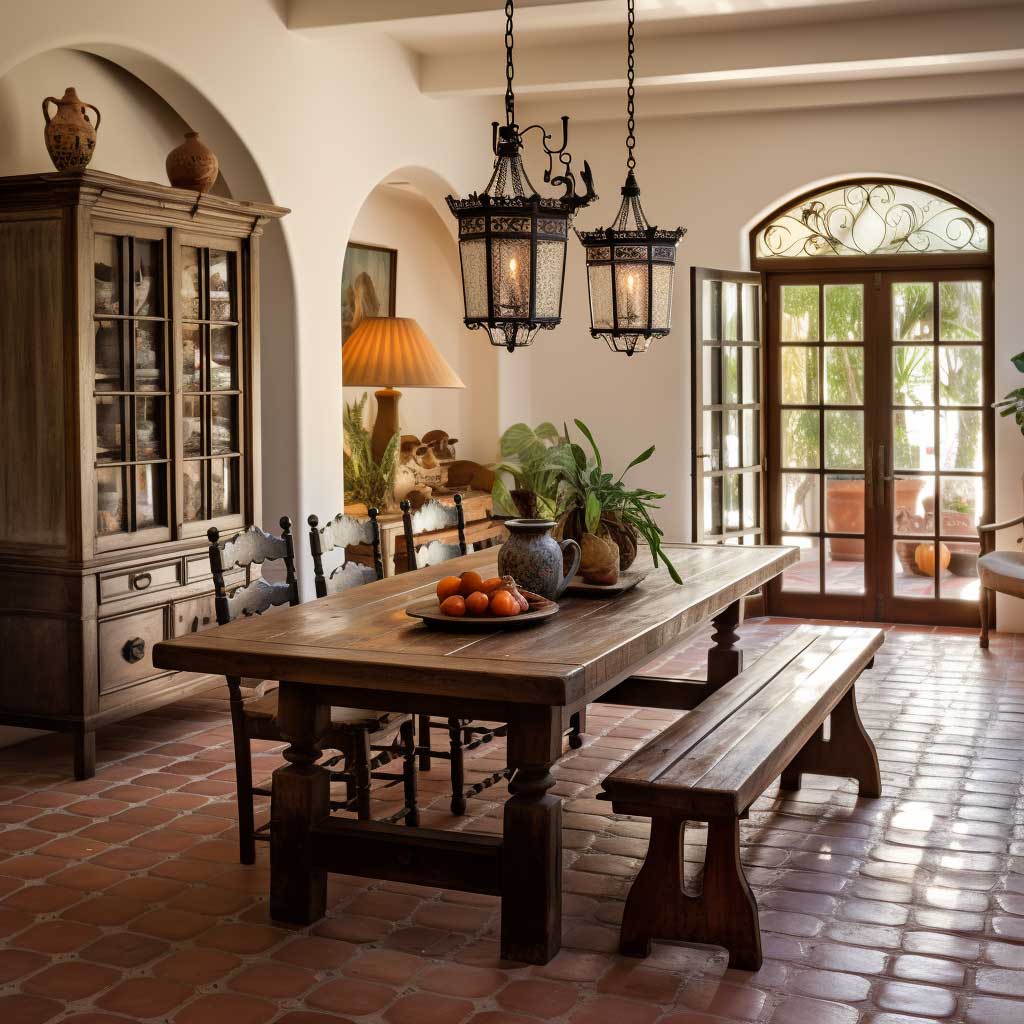
The dining table in a Mediterranean style dining room is often made of wood with a rustic or distressed finish. The chairs may feature wrought iron or wooden frames with upholstered seats in neutral colors or earth tones. Decorative pillows and throws with patterns inspired by nature or Mediterranean motifs add texture and color to the space. Additionally, a large area rug with a geometric or floral pattern can anchor the dining table and add warmth to the room.
Lighting is an essential element in a Mediterranean style dining room. Natural light is maximized through large windows or French doors, often dressed with sheer curtains or wooden shutters. Additionally, a wrought iron chandelier or lanterns with warm white bulbs create a cozy and inviting atmosphere in the evening.
In conclusion, a Mediterranean style dining room is characterized by its use of natural materials, textured walls, and a warm and earthy color palette. Decorative elements such as mosaic tiles, pottery, and tapestries add visual interest and a touch of Mediterranean charm. With its cozy and inviting atmosphere, a Mediterranean style dining room is the perfect space to gather with family and friends and create lasting memories.
Mediterranean Style Outdoor Space
The outdoor space is often considered an extension of the home, a space where we relax, entertain, and spend quality time with loved ones. Therefore, it is essential to create an outdoor space that is not only functional but also aesthetically pleasing and inviting. One way to achieve this is by incorporating the Mediterranean style into your outdoor decor. The Mediterranean style house interior is characterized by its use of natural materials, textured walls, and a color palette inspired by the sea and nature.
In a Mediterranean style outdoor space, natural materials such as stone, terracotta, and wrought iron are commonly used in furniture and decor. The flooring is often made of stone pavers or terracotta tiles. Additionally, a pergola or gazebo made of wood or wrought iron can provide shade and architectural interest to the space.




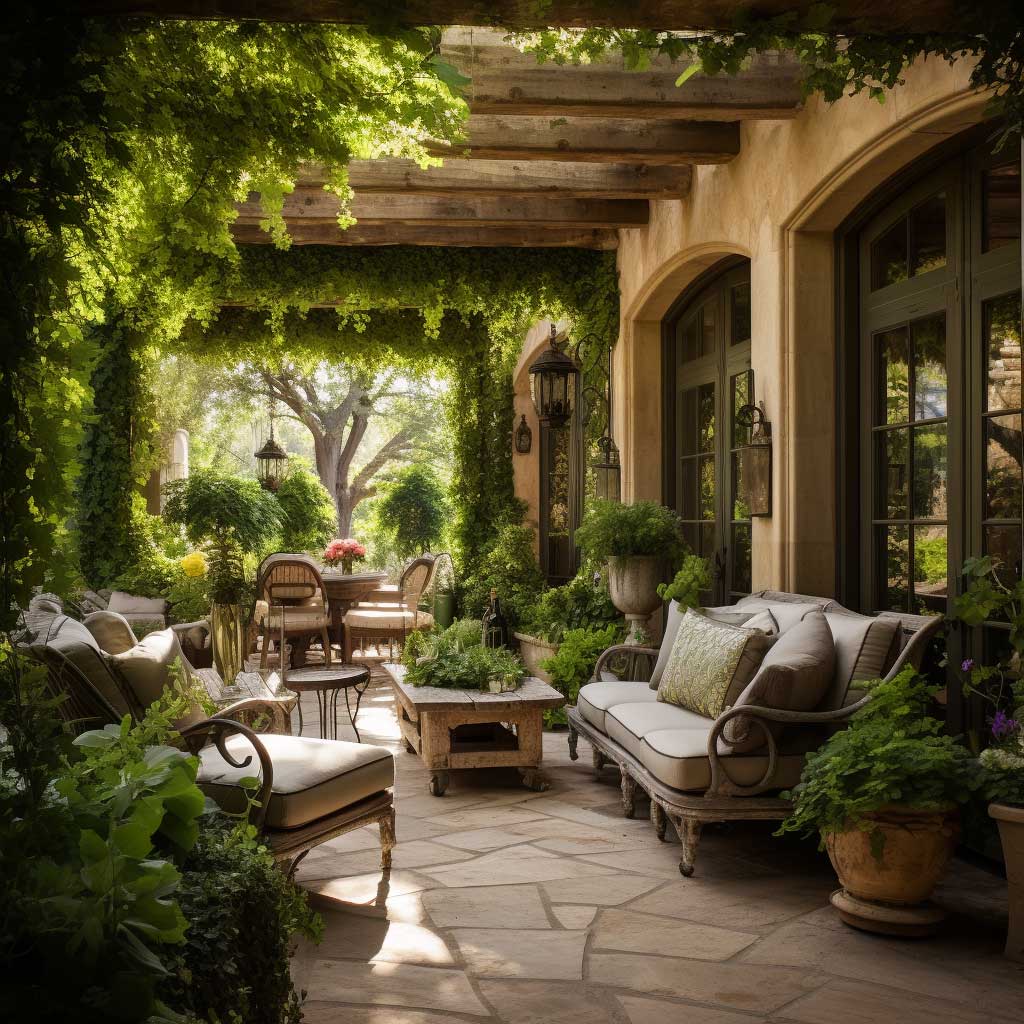



The color palette in a Mediterranean style outdoor space is warm and earthy, with shades of terracotta, olive green, and beige. Accents of blue, green, or yellow add a pop of color and create a fresh and vibrant atmosphere. Additionally, decorative elements such as mosaic tiles, pottery, and ceramics add visual interest and a touch of Mediterranean charm.
The furniture in a Mediterranean style outdoor space is often made of wrought iron or wood with a rustic or distressed finish. Upholstery is typically in neutral colors or earth tones, with accents of blue, green, or yellow. Decorative pillows and throws with patterns inspired by nature or Mediterranean motifs add texture and color to the space. Additionally, a large area rug with a geometric or floral pattern can anchor the seating area and add warmth to the space.
Lighting is an essential element in a Mediterranean style outdoor space. Natural light is maximized through the use of large windows or French doors. Additionally, wrought iron lanterns, sconces, or string lights with warm white bulbs create a cozy and inviting atmosphere in the evening.
In conclusion, a Mediterranean style outdoor space is characterized by its use of natural materials, textured surfaces, and a warm and earthy color palette. Decorative elements such as mosaic tiles, pottery, and ceramics add visual interest and a touch of Mediterranean charm. With its cozy and inviting atmosphere, a Mediterranean style outdoor space is the perfect oasis for relaxation and entertainment.
Mediterranean Style Entryway
The entryway is often considered the first impression of your home, a space that welcomes guests and sets the tone for the rest of the house. Therefore, it is essential to create an entryway that is not only functional but also aesthetically pleasing and inviting. One way to achieve this is by incorporating the Mediterranean style into your entryway decor. The Mediterranean style house interior is characterized by its use of natural materials, textured walls, and a color palette inspired by the sea and nature.




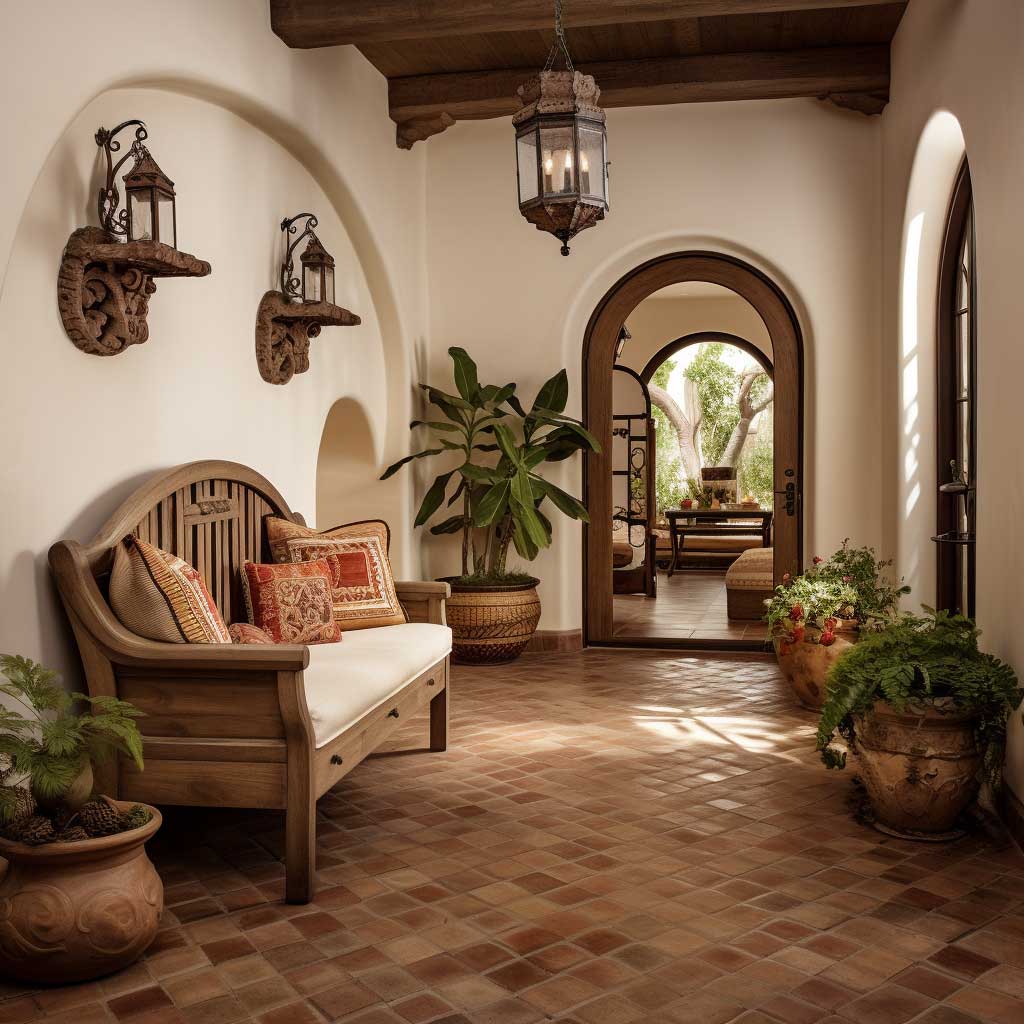
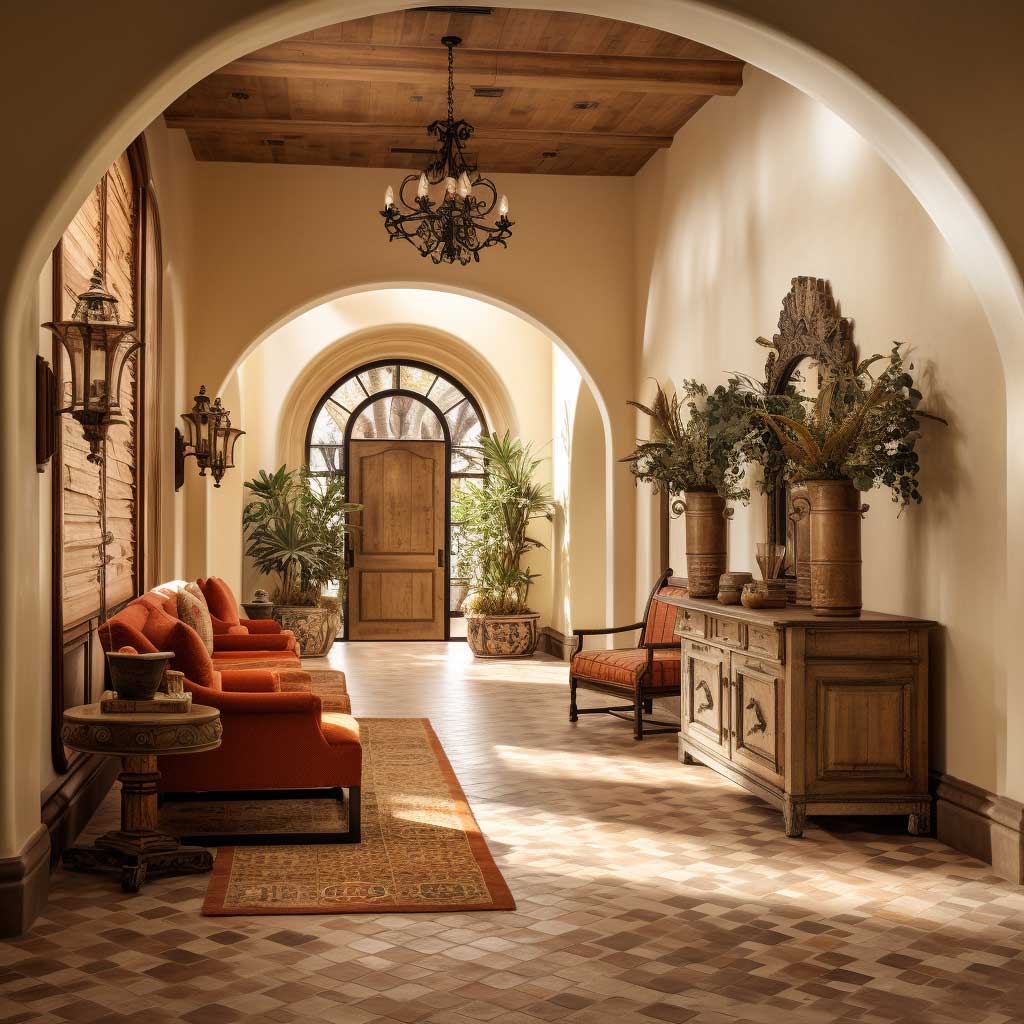


In a Mediterranean style entryway, the walls are often textured with stucco or plaster to create a rustic and aged appearance. The color palette is warm and earthy, with shades of terracotta, olive green, and beige. Natural materials such as wood, stone, and wrought iron are commonly used in furniture and decor. Additionally, decorative elements such as mosaic tiles, pottery, and tapestries add visual interest and a touch of Mediterranean charm.
The furniture in a Mediterranean style entryway is often made of wood with a rustic or distressed finish. A console table or bench with wrought iron or wooden details can provide a functional surface for keys, mail, or decorative objects. Additionally, a large mirror with a wrought iron or wooden frame can add depth and dimension to the space. Decorative pillows and throws with patterns inspired by nature or Mediterranean motifs add texture and color to the space. Additionally, a large area rug with a geometric or floral pattern can anchor the space and add warmth to the room.
Lighting is an essential element in a Mediterranean style entryway. Natural light is maximized through large windows or French doors, often dressed with sheer curtains or wooden shutters. Additionally, a wrought iron chandelier or lanterns with warm white bulbs create a cozy and inviting atmosphere in the evening.
In conclusion, a Mediterranean style entryway is characterized by its use of natural materials, textured walls, and a warm and earthy color palette. Decorative elements such as mosaic tiles, pottery, and tapestries add visual interest and a touch of Mediterranean charm. With its cozy and inviting atmosphere, a Mediterranean style entryway is the perfect space to welcome guests and set the tone for the rest of your home.
The Mediterranean style is inspired by the coastal regions of Spain, Italy, and Greece and is characterized by its use of natural materials, textured walls, and a warm and earthy color palette. Incorporating the Mediterranean style into your home decor can create a cozy, inviting, and aesthetically pleasing atmosphere in every room. From the living room to the entryway, the Mediterranean style house interior offers a timeless and beautiful design that evokes the charm and warmth of the Mediterranean region. With its natural materials, textured surfaces, and decorative elements, the Mediterranean style is the perfect choice for creating a cozy and inviting home.
